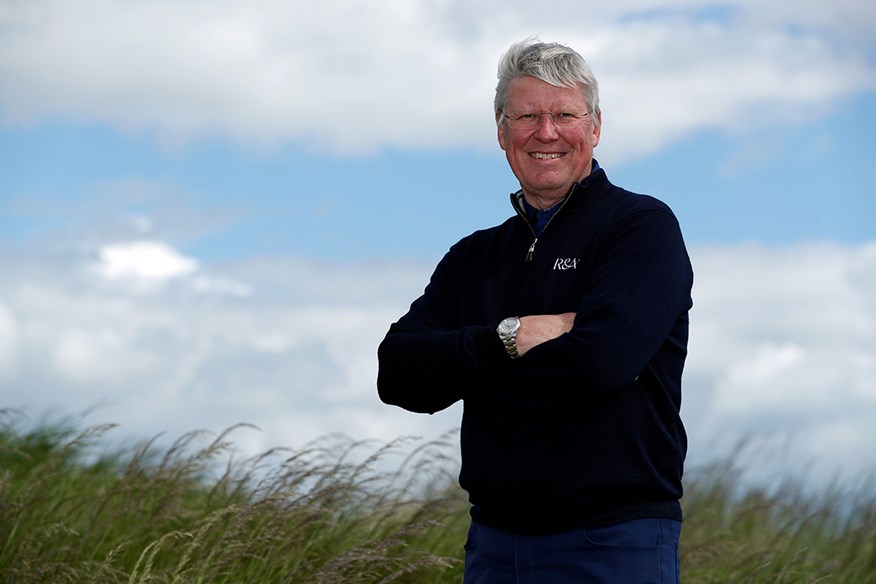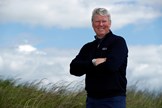R&A reveal more changes may be coming to the World Handicap System
Last updated:
In his final interview before departing the R&A, Martin Slumbers sat down with Today’s Golfer to set the record straight about Trump Turnberry and the rollback, his relationship with the Saudi PIF, and why more changes may be coming to the World Handicap System.
Martin Slumbers had been “counting down the days” to hand over the reins to his successor Mark Darbon. On Friday, he finally did it. There was to be no grand farewell, just a quiet exit for a man who has presided over some of the biggest – and most significant – changes to golf in the modern era. It started just two years into his tenure when he led the merger with the Ladies’ Golf Union, bringing the Women’s Open under the governing body’s control for the first time in 2017.
A complete modernization of the R&A’s activities followed soon after and included the biggest rewrite of the rule book in 68 years, plus the introduction of new international amateur championships for women and golfers with disabilities, and the rollout of the World Handicap System (WHS) in conjunction with the USGA.
More recently he has been at the forefront of controversial plans to limit driving distances of the big hitters by up to 20 yards, with regulations now in place that will render nearly every golf ball in circulation non-conforming from January 2028. That he isn’t seeing the rollback through to the end is perhaps the biggest surprise, though he says it was always his intention to stay in the post for a maximum of 10 years. By staying true to his word, he is leaving behind an organization which is in a far stronger position now than when he found it, with participation rates and prize funds at a record high.
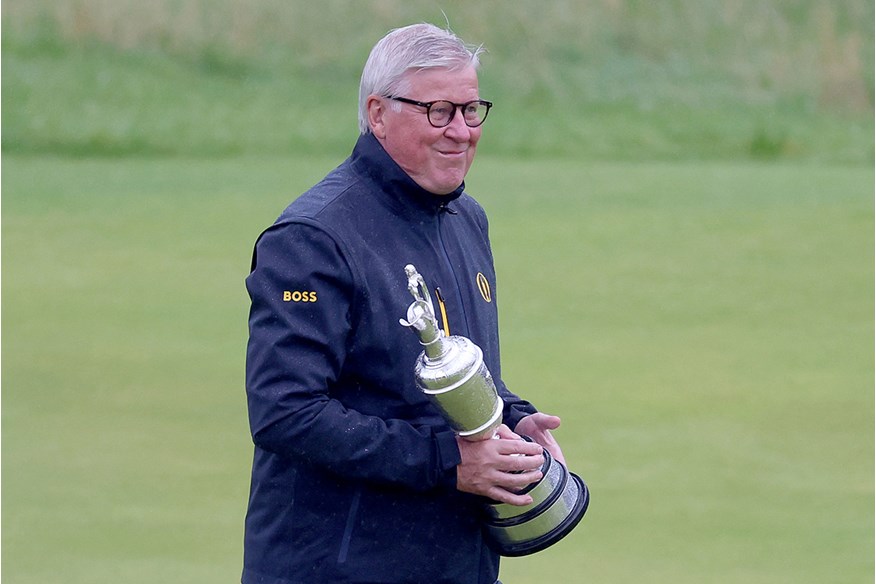
Ahead of his departure, we spent 45 minutes with Slumbers to reflect on his status as the second-most influential man in golf, the challenges facing his successor, and why talk of retirement is premature. As part of the wide-ranging interview, Slumbers also defended the rollback proposals, voiced his displeasure at the limited number of big tour events outside America, and raised more concerns about Trump Turnberry’s ability to host an Open Championship despite recent investments.
When news broke of your departure, a lot of people were taken by surprise. Why walk away now?
A couple of reasons. When I started, I’d already retired once from finance. And I was very clear with the board that I would do a minimum of five years and a maximum 10, and I would definitely go when I started to run out of ideas. Well, I’ve still got plenty of ideas, but this is 10 years since I signed my contract.
We’ve had such great success in that time in getting more people to play golf. We must not forget that 10 years ago, the game was in decline in nearly every area of the world. Club membership had declined every year, from 2006 to 2016. And yes, Covid came along and helped us, but golf in the R&A’s jurisdiction (outside the US) has grown more since Covid than it did during Covid. It’s up 10 million since 2016 for nine hole and 18-hole golf, which is extraordinary.
We’ve moved the game to the point where outside of swimming and going to the gym, it’s probably the largest recreational sport in the world. A lot of what I do, outside of the commercial activities, is talking to young people about taking up the game and I feel it’s more important to have someone a bit younger having those conversations with them. I’m 65 at the end of the year, and the time is right to hand it on to the next generation.
Did a part of you not want to see the Distance Insights project through to the end?
I saw it through to the decision. In December last year we got to the inflection point after six years of the decision having been made. Now it’s about the implementation of that decision.
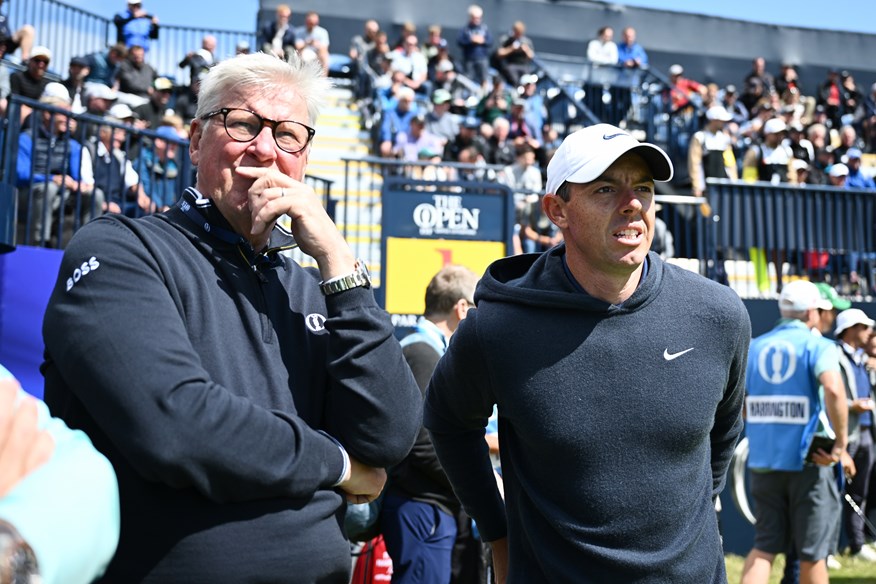
You have been a torchbearer for rolling the ball back to protect the future of golf courses. But I would argue that distance isn’t an issue in the women’s game or at recreational level. Is it right to change the rules for everyone when it’s only really targeted at one percent of the golfing population?
You’ve got to make sure you put it in perspective. Yes, it is primarily a problem at the very elite male end. I don’t disagree with that. But there are two other aspects of this that are really important. One is if you have a swing speed below 100 miles an hour, the actual impact of the rollback ball will be minimal.
For an average male recreational golfer, I could go into their bag and replace the balls tomorrow and they’d have no clue that this is a different ball. And then if you look at it in the women’s elite game, the players are getting longer and longer. They’re maybe five years behind the men. There’s a lot of them knocking it out there 275 (yards). Now, they’ve got plenty of tees to go back to be able to do that, but there is also a health and safety aspect in recreational golf, where you’ve a lot of quite strong, mostly male golfers who aren’t very skilled, hitting the ball in various directions that are putting a lot of people at risk.
I’m sure you’ve seen courses that have had to redesign holes for safety reasons. So I think for the average golfer, it’s a minimal difference that you won’t notice, but there are more reasons than just the one percent.
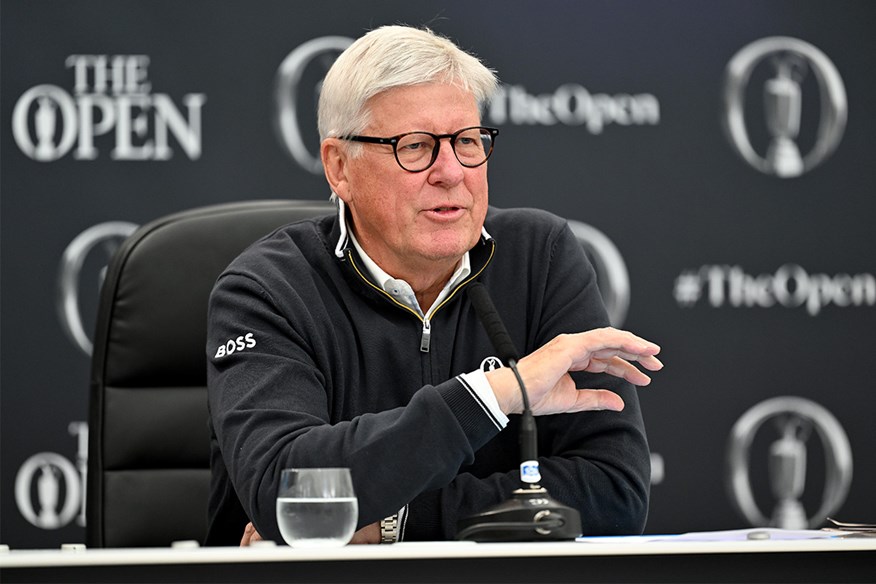
Are you concerned, though, about the ability of clubs or officials to police the balls people are using in competition? I can see a scenario where golfers are going to be reluctant to get rid of their older, faster golf balls.
I think that is a real issue. But we will come up with a solution with the industry that makes it very clear to the golfer and to organizers that this is a new ball under the new rules in 2028. How that is done? That’s still open for discussion.
Last year I asked you how you would rate your tenure out of 10. You never gave me a number then, so can you do so now?
That’s for other people to rate. But when I started, I had a little piece of paper in my desk which had the things I wanted to get done. I added to that during my 10-year period and before I took my decision, I ticked off everything on that list. We have done a huge amount to make the R&A more commercial, which has enabled us to double our investment commitment over this decade and the previous decade.
I also think we have made massive strides in the recreation game to make it a game for all, particularly by bringing in more women and girls to the sport and embracing off-course golf. I mean, who would have thought the R&A would have been embracing driving ranges and pitch-and-putt courses?

When we spoke last time, you said you had received 10 inquiries about other golf clubs copying the Golf It! concept. What is the plan for that, moving forward?
The plan is exactly the same as it was last year. I’m still very optimistic that we’ll see multiple rollouts around the world using the Golf It! model. It may look slightly different because the one in Glasgow is a big facility. But there are so many people who are interested in the programs that we run, the way we approach the golfer, the way we embrace families, and the way we have created the journeys into golf.
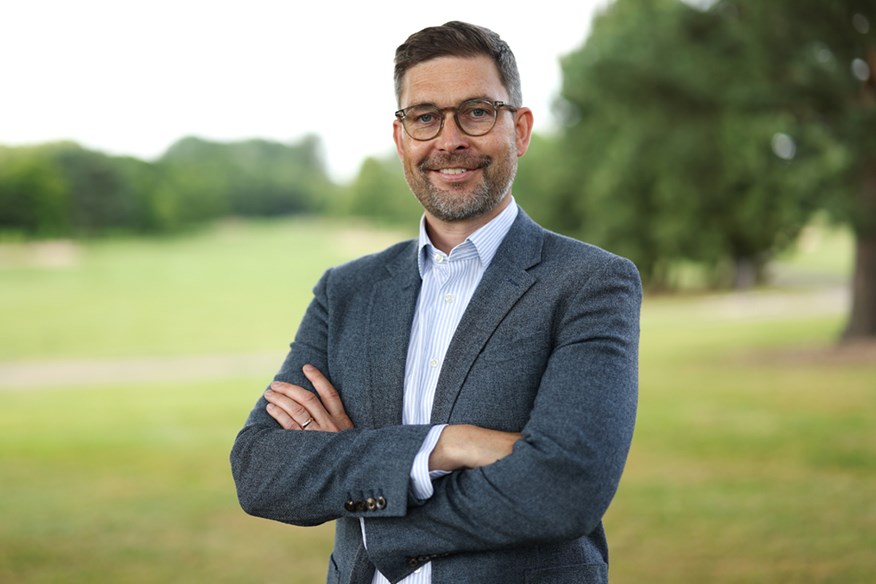
You said earlier that you still have a lot of ideas. What are they and what things will you be leaving in Mark Darbon’s in-tray?
Well I’m certainly not going to write his strategy! But where we go with the commercial model, given where prize money is going, will probably sit right at the top. We wanted to move more towards equal prize money in the men’s and women’s game, and that’s proven tough. With TV ratings falling, that is a challenge commercially for us.
I think the other thing is looking to build upon the growth in participation. We’ve done reasonably well in getting more women and girls into golf, but there’s still a huge amount to do, particularly in the UK. So, he’s got a pretty full inbox but he’s a hugely competent individual and I think he will be really great for the game.
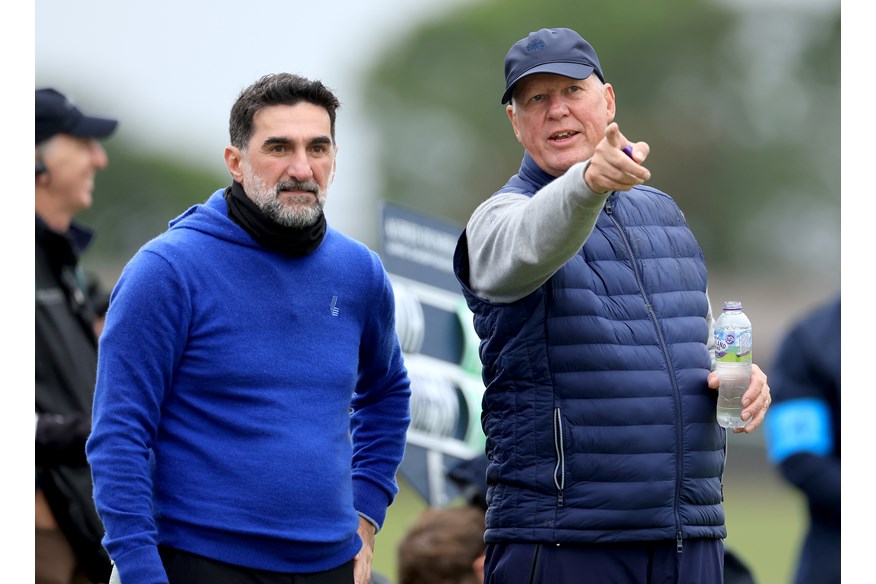
You’ve previously hinted that the R&A would be open to investment from the Saudi PIF. Have you ever had discussions with Yasir Al-Rumayyan about that and if not, do you envisage a time when they might happen?
We’ve had no discussions on that basis… from either side. But I do think that the sport is evolving and is in a very different situation than it was two years ago. The Saudis have made large investments – and they’re continuing to make large investments. And I think it’s really important that we recognize that the world has changed, and there’s no advantage to being an island. You need to be part of where the game is developing, and I’d much rather be inside the tent than outside the tent.

We’ve seen big increases in the prize money on offer at the men’s and Women’s Open. You’ve also talked in the past about this growth being financially unsustainable, particularly on the men’s side. What’s the solution?
I was very clear at The Open Championship of that concern about financial sustainability, but I’m also very concerned about the pyramid of golf that the R&A is responsible for, from grassroots right up to The Open Championship, and making sure we allocate resources appropriately. If the game is truly going to be strong, it’s got to be strong at the bottom as well as the top. And I still think those arguments are as valid today as they were last July. For that to happen, I would like to see us return to two things.
Firstly, I would like a more measured approach to prize money in the sport that is more commensurate with financial sustainability. I would like to see far less talking about money. We are watching TV ratings falling by double digits, and I’m absolutely convinced that one of the reasons for that is that we turned off a lot of people who watch golf by this constant talk of money. I think that is very bad for the game.
Secondly, I would like to see us return to having the best players in the world playing on a global basis. You can’t just play in a small subset of the world. There are more people who play golf recreationally outside of America than inside of America and we need to reflect that.
On learning that The Open ranked as the 28th highest-paying championship in golf, you said that you didn’t care. Do you think players would care if they played for the title and nothing else?
Actually, what I said was that (a) I didn’t know and (b) I didn’t care. But no, they’re professional golfers. They play golf for a living, and they should be paid commensurate with the business model that there is for professional golf. But it is a business, and the revenues and costs need to have the appropriate relationship. And I do believe we have lost a lot of focus on that.

Another thing you’ve been asked about a lot is Trump Turnberry. Putting the ownership to one side, does Turnberry have the capacity and the infrastructure to host an Open Championship? The reason I ask is because I know you want larger crowds, and historically Turnberry has had some of the smallest attendances.
Well, we had 270,000 in Troon and we haven’t announced Portrush yet, but it will be significant. When you are physically in Turnberry there is plenty of room, but there is a very significant challenge in getting that number of people to the golf course. The road and the railway system are not conducive to that number of people, as well as the hotels and accommodation and other aspects that are needed for crowds of that size. So infrastructure wise, Turnberry is a real, real challenge.
Besides Portmarnock, are there any other courses you’d like to see added to The Open rota?
The answer to that is no. And I genuinely mean that. We have spent quite a bit of time scouring the country, looking at courses to see if we are missing something. And for The Open Championship, there is nothing else on our radar.

Let me ask you about the Women’s Open. Why has the R&A not adopted a links-only policy like the men’s championship?
We have fundamentally redesigned the whole spectator experience at Walton Heath and then this year at St Andrews. What we’ve tried to do is not stage it as a smaller version of The Open Championship, but to have its own distinct brand, which is more family-orientated and more angled at trying to get women to watch than we have had previously.
The stark reality is that more men watch it than women. But this year, on Saturday, was the first time ever for the R&A that we had more women at the AIG Women’s Open than men. But to be able to do that you need to go to the large conurbations of where there are female golfers. And if we just confined ourselves to links courses, we would be eliminating the southeast area, where there are a large number of women and girls playing golf and wanting to watch. We saw that at Walton Heath.
We want to go to the very best golf courses in the country, but we’re also trying to grow the viewing audience, as well as the attending audience. To avoid London would be a real mistake.

In 2026, the USGA are bringing the men’s and Women’s US Open to Shinnecock Hills in consecutive weeks. Why hasn’t the R&A done something similar?
If you look at the 18th hole and the set-up of an Open Championship at St Andrews, we can get 8,000 people around that arena, which you wouldn’t be able to do in the women’s game, so it would look empty and it wouldn’t look right. I also genuinely believe that women’s golf is different and mixing it directly with the men’s would be a mistake. I think they should develop their own brand.
How do you reflect on the introduction of the WHS, because it has been hugely divisive? Will it always be an imperfect system?
If I looked at pre-WHS in the UK, using our CONGU system, the average number of cards submitted was three a year per golfer. It was extremely difficult to go up or down in that system, so the handicap really wasn’t a reflection of your playing ability. But more importantly, this is a global game, not a local game, and it always seemed nonsensical that you don’t have a handicap in France which is equivalent to a handicap in Australia.
We are three years into the new WHS. We invited 40 of our most significant golfing affiliates to St Andrews last week and 37 turned up. They had a very good and extensive discussion around real feedback, not anecdotal feedback, from around the world. I am sure – and I know – that will lead to ways in which we can improve it.
What are you going to miss the most?
Sitting at the top table of the sport I love. It is a bit of an adrenaline drug, and it’s also a huge responsibility. I will miss that, but there are plenty of other things to do. I’m going to disappear for a while and let Mark get on with it while I play some golf. But I’m not going to fully retire. I’m still going to work.
In what capacity?
I’d like to do some non-exec roles in business and in sport, and I’d like to do something in charity. I chair a school board and I’ll be doing that for another two years. So a mix of things, but not as a chief executive.
